As an Amazon Associate I earn from qualifying purchases.
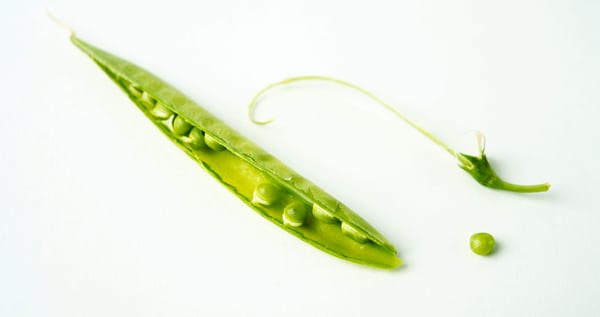
I could tell she was coming for a fight. I’d been talking to a reader at a book event at the time, and I couldn’t help but notice the middle-aged woman standing behind the guy I was chatting with. She appeared to be wearing some sort of hand-knit shawl, had a bandanna on her head and had decorated her blouse with several buttons sporting some sort of slogan or another on her chest. She practically oozed umbrage as she fidgeted, waiting to talk with me.
The gentleman bid his adieu and I turned to the nice lady, smiling. She never even let me get in a “hello.” How can you POSSIBLY get away with telling people that wild peas are edible? They are HIGHLY poisonous, and EVERYBODY knows it! I finished with my hello.
“Well, ma’am,” — and yes, I absolutely did “ma’am” her — “I’m not sure where you heard this, but wild peas are most certainly not toxic. In fact, I’ve been eating them my whole life.”
She began rambling on and on about neurotoxins and cancer and God-knows-what-else. I let her talk for a few minutes. “Well, I’m sorry you feel that way, ma’am. I guess we’ll just have to agree to disagree. Bye!”
This encounter was only the most extreme in a series I’ve had concerning my love for wild peas. Out of all the things I wrote about in my first book, Hunt, Gather, Cook: Finding the Forgotten Feast, wild peas — specifically those plants in the Lathyrus clan — were by far the most controversial subject. Whodathunkit?
An odd thing, really. Wild peas are pretty much the same thing as garden peas, Pisum sativum, only much smaller. If you’ve ever eaten the pretty little beach peas, L. japonicus, at their peak, they are even sweeter than the daintiest petit pois. They were possibly the first wild food I ever ate, and are definitely the first wild food memory I ever had.

Wild peas grow all over the world, from the boreal forests to the tropics. At last count, there were nearly 190 species of Lathyrus pea worldwide, and something like 70 in North America. Here in the West lies the greatest diversity of species. You know them, even if you don’t know they are peas. Their flowers are unmistakable, dolled up in anything from white to lavender to blue, purple or even lurid magenta.
So how is it we don’t eat a wild food that looks like one of the most popular garden vegetables in America, which happens to grow all around us? Hard to say.
Those who argue that wild peas are poisonous often point to the “fact” that Indians did not eat them. I am not sure how this myth was perpetuated, but it is patently false. Even a brief look into North America ethnobotany — yes, I am a plant geek and do such things — turns up the following:
- L. japonicus was eaten by all sorts of groups that lived along the seashore, from the Eskimo to the Iroquois.
- L. polymorphus was a common snack among Omaha Indians, as well as a variety of pueblo tribes such as the Cochiti.
- L. gramnifolius was eaten as pea shoots by the Karuk of Northern California.
- L. jepsonii and L. vestitus were eaten by our local Indians here in the Central Valley, the Yokuts and Miwok.
- L. lanszwertii was widely eaten by the Apache.
- L. ochroleucus were (and are) eaten by the Ojibwe in the Upper Midwest; this is a white-flowered pea.
Searching for the origin of this myth, I came across a whole other set of Lathyrus peas — peas that originated in Eurasia but which have naturalized here in America. That pretty pea flower you see above? It’s not native. It is the flower of the Southern European L. latifolus, which can be found in almost every state in the Union, and most Canadian provinces.
You might also come across a wild pea with fuzzy pods. This is the European L. hirsutus. My friend and fellow forager Connie Green has found these in Napa and its environs. If you find a wild pea with pretty red flowers, it will likely be L. cicera, the red pea. It too is a Euro-immigrant. So is the common garden ornamental sweet pea, L. odoratus.
And then there is the elephant in this room of peas, the chickling vetch, a/k/a cicerchia bean or grasspea, L. sativus. I’ve written about cicerchia beans before. I am willing to lay down cash that all this kerfuffle over wild peas being poisonous has its origin with the cultivated L. sativus.
Why? Because there is a speck of truth in what that crazy lady was ranting on about. Can you poison yourself with Lathyrus peas? Yep. You can. It has been made abundantly clear that a diet that hinges on peas of this genus can, over a period of weeks or months, permanently damage the nervous system and cause a wasting disease called lathryism. One peculiar symptom of this disease is that is atrophies your ass muscles. Weird, right? What’s more, the disease seems to affect men, and specifically men under the age of 30, about eight times more often than it does women or older men.
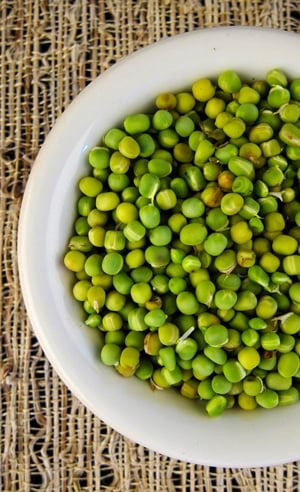
The culprits seem to be a series of amino acids and anti-nutrients — substances that bind to other nutrients in the body to make them undigestible, thereby depriving the animal (you) who ate it of not just the nutrients in the pea, but also from other things you ate. A substance known as ODAP is a particular nasty, but there are other things going on as well.
Scientists, mostly in India, where chickling vetch is widely eaten in excess during famines, have determined that a diet of about 30 percent L. sativus sustained for 3 months or more will probably give you lathyrism — if you are susceptible to it at all. Most people aren’t. “In contrast,” the study showed, “subsistence on a varied diet containing grasspea is apparently harmless, particularly when such a diet includes animal products.”
The best work by a forager on wild peas done to date was in 2004 by my colleague John Kallas of Portland. Nowhere could Kallas find any documented evidence of human poisoning from wild peas. Ultimately, he came to the same conclusion I did: That eating small amounts of wild peas is perfectly safe — so long as you are not allergic to them, and allergies are something no one can predict. “Remember that no food plant in the world today can guarantee 100 percent freedom from any harm, under all circumstances,” he said.
On a less scientific level, I find it fascinating that wild peas appear to have cast a distinct bargain with animals, including us: Eat a little and you’re OK and I’m OK. Eat a lot, so that I cannot reproduce, and you will suffer. Harshly.
So how do you identify, harvest and use wild peas?
First off, look for the flowers. Pea flowers are unmistakable, especially when you have a variety with magenta flowers around. There is another variety with white flowers in the Upper Midwest that’s pretty easy to identify, too. It’s the lavender-flowered ones that can be mistaken for vetch. Vetch is also a pea-like plant, but is only borderline edible, except for the young shoots, which are tasty. Size is one way to tell: For the most part, peas are larger, thicker plants. Also look at the stems, which will have funny little “wings” on the edges and are angular. Vetch stems tend to be round, like any other plant stem.
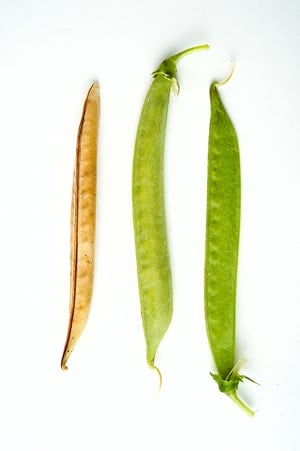
And, obviously, there will be peas on the plant. Peas “roll,” in that the pods don’t all ripen at once, so you will almost always see both flowers and ripe pods on the same plant.
You can use wild peas at all stages of growth. I like the pretty flowers as a garnish for a dish (they taste like peas), and the young pea shoots are every bit as good as the kind you get at fancy farmer’s markets. As for the peas themselves, I’ve eaten them anywhere from the “snow pea” stage all the way to dry beans.
If you want them at the snow pea stage, you will want to boil your pods in salty water for a good 3 to 5 minutes to soften them; they are not as tender as a store-bought snow pea. Five minutes will soften them, though, and still preserve that vibrant green.
Shelling the green peas is no different from shelling an English pea. A lot of people, Kallas included, dismiss wild peas as too much work for too little effort. No way. I shelled 4 ounces of wild L. latifolus peas in less than 15 minutes. It may not look like a lot, but four ounces, simmered in a little stock and sweet butter, was more than enough to fill me up for lunch.
You can also store dry wild peas and cook them later. But beware: Wild peas fling their seeds to the four winds when completely ripe. You need to pick them when brown and dry, but before the pod twists and pops. Keep them in a warm, dry place in a container that will catch any seeds that are flung by the popping pods. I use a large hotel pan, but one of those cheapo foil roasting trays you get at the supermarket will work, too.
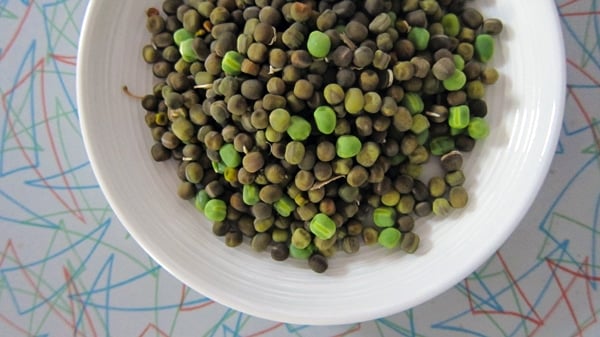
I can tell you that I have eaten wild peas whenever I’ve found them for nearly 40 years. But I can also tell you that I’ve never eaten them more than twice a week, and I usually eat wild peas less than a dozen times a year. At that level of consumption, I see no reason not to wholeheartedly endorse wild peas as a wonderful wild food.
What’s more, wild peas, as much as any food anywhere, highlight one of the defining features of our human biology: We Homo sapiens are designed, over a million years of experience in nature, to eat a little of a lot, not a lot of a little. Good words to live by even today.

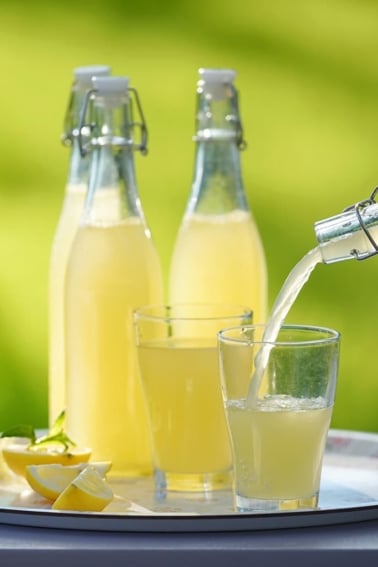
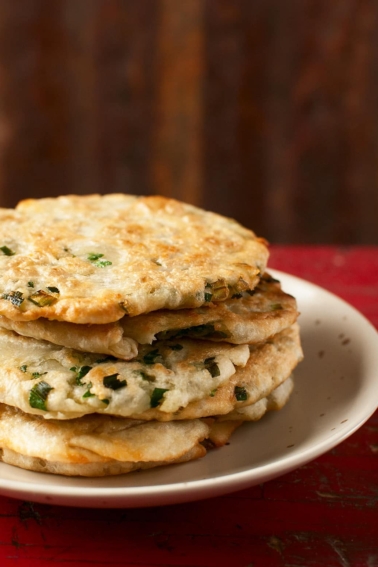


I suggest you watch the movie, into the wild or fast forward to near the end, this young man “Christopher McCandless” true story, expoloring the Alaska wilderness, ended up eating fuzzy pea pods from a wild sweetpea, he even journaled his travels, and read after in a book he carried it was poisonous, after his symptoms. To late for him since it made him to weak to get food , he died in the wilderness,
Jan: That movie is 100% false. Seriously. Even to the point where the movie maker invented a page in a foraging book. It is a real-life case of “fake news.” McCandless died of starvation, plain and simple.
I suggest you consider that not every detail in works of entertainment, even when generally based on actual events, are actually true.
Let me guess – you just finished watching the movie, did a Google search for “wild sweet pea”, as seen on the page of a movie prop book, found this page and couldn’t help but share your expertise on the subject, who’s entirety consists of having watched a movie.
The degree to which we’ve lost the ability to differentiate between entertainment and reality is frightening.
I justread thatLathyrus latifolius L.is highly toxic while still chowing down on a handful of wild raw ones. Should I just eat jimpsom pods without the everlasting peas until I know for sure?
Hi, I have planted sweet pea vines in my vegetable garden, not realizing they aren’t the same as other peas usually planted in a vegetable garden. Can I eat this kind of pea too? Is it ok for my toddler to eat them as well? Also, you discuss how wild peas are not really bad for you, but are they really good for you too? Thanks!
Elisa: Lots of things are called sweet peas. Do you know the Latin name?
Same no latin on bag but 2 we’re royal sweet peas ‘fregrant’ 24-30 ” mix color,one bag was jet setcsweet pea 20-30″ mix color. Also looking to plant any of my edible flowers in my garden so it’s no just bland looking and has more fregrences?… Any good ideas?? Thanks for more info on this kinda life style I enjoy trying different foods…
LH: I am not certain on this one. I seem to remember that the garden “sweet pea” ornamental is not edible. It’s a different genus from all the peas I am talking about here. Without the Latin name I can’t help you much, Sorry.
Thanks for the info! I came to Oregon 7 months ago, from California and was blown away by all the beautiful wild botanicals. I did something different with them tho – I got to know them and started experimenting and researching, and I created a line of natural skincare. I had a business already, and a dream to expand to a full line. Little did I know it would come as a result of falling in love with nature and foraging, steam distilling and extracting bioactive nutrients from the plants all around me! I love these beautiful wild pea flowers, and thought I’d see if they have anything to offer natural skincare. Haven’t found out yet, but I loved your article and you sound like a very interesting person! Thanks!
Thank you so much for the information! I just found wild peas and black raspberries growing on my property and was giddy with excitement but wanted to get more information! Thanks again!!!
Hey! question.. so I’m pretty sure I have L. latifolius (but also looks like L. sativus) the flowers are hot pink like the photo. I really enjoy eating pea flowers in salads, and snacky in general. I’m wondering if its better to eat the peas over the flowers? Or both are the same. Thanks!
Jessica: I like the flowers, but the fresh green peas are great. But they are more of a pain to harvest.
Hey Hank, thanks for the article, lovely to hear that the wild peas are edible 🙂 Just wondering if you have any experience with L. Latifolius? I’m in Australia, thinking of incorporating it into a food forest in the future.
In regards to the “anti nutrients” aspect of these plants: am I correct in assuming that no matter what quantity of peas you consume, you will still be deprived of some nutrients? My girlfriend has celiac disease and so already can have trouble getting her body to absorb nutrients, so hearing about this effect is giving me some pause about incorporating them into our diet.
LSH: Anti-nutrients are mostly a thing with raw or undercooked beans. And yes, I eat L. latifolius, as it’s one of our local peas. Legumes are often problematic with people who have digestive issues, so I’d go slow with it.
I have the magenta color ones and have harvested the seeds. Should I plant them in the ground now or wait until spring?
Leslie: Where do you live? If it’s a warm place like California, plant around Thanksgiving. If it’s a cold place, wait until early spring.
“Middle aged woman” sounds pejorative in the way you described her.
How old are you?
Love wild peas!
Ella: How old am I? Middle-aged. 😉
I’m going to try to plant the wild sweet peas flowers seeds i found on the side of the road in Tahoe
https://www.npr.org/sections/thesalt/2013/10/01/228221063/when-edible-plants-turn-their-defenses-on-us
Ukrainian concentration camp that fed prisoners bread made from wild pea seeds as an experiment.
Hey if I die from eating a bowl of wild peas, it’s better than some other deaths I can think of and it will give kids ammo against eating their peas with mom. I’ll be a saving legend to children everywhere. Fittingly, plant sweet peas at my headstone and kids can donate cans of peas to food drives in my name. ?
Thanks for a very interesting article!
Sorry if this has already been asked, but I was left unclear wether the toxic amino acid ODAP was present in all Lathyrus species, or only in the case of the primary culprit you cite, the grass pea, L.Sativum (and perhaps a few others) ?
I need to ask because you made the point with Jennifer in the comments above that L.Latifolius is fine when eaten in moderation. Is that meant to imply that L. Latifolius also contains some ODAP
(albeit in lower quantities) ?
Thanks!
Paul
Paul: They all have it.
I can’t quite tell by the article if the Southern European L. Latifolus (magenta peas in the picture) are edible or not. You were talking about where the myth came from that wild peas are poisonous and you mentioned the European variety…so it made me wonder if they’re the poisonous type…or if perhaps none of the wild peas are poisonous – as long as they’re eaten in moderation (and you’re not allergic?)
Jennifer. It is quite edible. Yep, if you eat them in moderation and are not allergic, you’re good to go.
is Thermopsis rhombophilia [or sub variety montana] poisonous or alright to eat?
the leaves and flowers smell like they would taste fabulous.
How about the leaves and stems? We have billions of the magenta flowered and white flowered wild sweet peas here in Southern Oregon and I would like to feed the greens to our caged chukar partridges. I notice my free range chickens won’t touch them.
Hi there, fellow forager! RK Henderson here, author of “The Neighborhood Forager”. I can verify that beach peas are utterly edible. I grew up on the beach, live there now, and have eaten untold buckets of these things. (During one period of my life, I survived for several weeks on nothing but brown rice, seaweed, beach peas, and cheese; my most recent beach-pea enhanced meal was last night.)
They are not poisonous, in any sense.
I’ll be posting on this resource next Thursday, 2 July 2015, for anyone interested.
Cheers,
Robin
Rusty Ring: Reflections of an Old-Timey Hermit
it was speculated that McCandless died of eating some kind of wild potato, coroner says it was starvation.
For the first 35 or 40 of my 74 years, one of my favorite snacks was the tips and leaves of the sweet peas in our garden (my parents, then mine). It wasn’t until recently I began to hear about how poisonous they are. Why am I still here? I ate them daily every summer in Colorado. I also ingested a large amount of leaves from the Chinese Elm trees. Not only are they filling and abundant, they are tasty. I never carried food into the wilderness. It wasn’t necessary. By the way … I don’t eat wild mushrooms.
Where can I purchase wild pea seeds